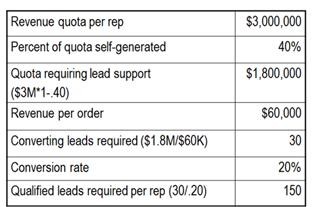
Every sales manager wants to see a healthy, thriving pipeline. It means that the sales process is running smoothly, and that sales reps are going through each stage and each step efficiently.
Of course, not all sales pipelines are always in this condition. Many sales teams find themselves in the midst of a chaotic system, or a sales process that shows some or all of the common pipeline mistakes.
So how can you keep your sales pipeline in tip-top shape?
There are many best practices, which you must all take into serious consideration. But there is one question that you need to answer if you want to make sure that your sales pipeline is always in good health.
“How many leads do you need to add to your pipeline to hit your sales target?”
In the sales magical world, every lead you contact becomes an actual customer. So if you contact 20 prospects, you get 20 new customers. But that’s what makes it magical: that very rarely happens.
As we all know, not all leads convert to a closed deal. The initial 20 prospects might only yield five or two or even no buying customers.
This is obviously what you want to avoid: getting no closed deals. And so you need to know your “magic number” and figure out the number of leads you need to bring into the pipeline so you can meet your sales objectives.
And just how do you do this?

There’s a simple way to look at it, but you’ll need historical data. Look at your numbers from last month, particularly your lead conversion data. Say, for example, that you generated 120 leads last month, and out of those, 40 converted into actual sales.
So if you need to close 60 deals a month, then that means you’ll need to generate at least 180 leads.
Of course, it’s almost never this simple. You’ll need to factor in other variables like average deal size and quota per rep.
There’s a simple calculator that you can use. For it, you will need four numbers:
- The average revenue quota per rep, in the period, whether it’s a year, or a quarter, or a month.
- The average revenue per order, or per closed deal.
- The percent of their quota that the sales people generate naturally, without the help of leads. This revenue typically flows from repeat sales, from deeper penetration within the accounts, or from referrals.
- The conversion rate from qualified lead to sales. In the example above, the rate is 33%. This is the formula for computing for your lead conversion rate: Divide the number of actual deals closed by the total number of leads generated. Multiply that by 100.
Here’s an example of how the calculation is done:

(source)
“We are saying that each rep is on the hook to deliver $3 million in sales in the period. As a first calculation, subtract out the percentage of that revenue that the rep can produce without any leads supplied by marketing. In this example, it’s 40% self-generated, leaving 60%, or $1.8 million, that the rep needs help with from marketing.
We divide that remaining revenue by the average deal size, which is $60,000 in this example, to get the number of closed deals that each rep, on average, needs to complete to deliver on the revenue quota. In this example, it’s 30 deals.
Finally, we divide the number of deals required by the lead-to-sales conversion rate, which is 20% in this example. Voila. Now we know that each reps needs, on average, 150 qualified leads to make quota.”
By determining the number of leads you need to hit target, you avoid the common sales pipeline pitfall: shrinkage or drying up. This means there are not enough leads or prospects coming in and in a few months’ time, the pipeline is empty with leads. And this causes the whole process to stop—because zero prospects means zero opportunities and zero things to work on.
You can’t afford for your pipeline to dry up, and so you’ll need to always try to generate leads and qualify them very well. This way, you get the healthy, thriving sales pipeline all sales managers aim for. Good luck!
Photos from Pexels. Main image by Rebrand Cities





